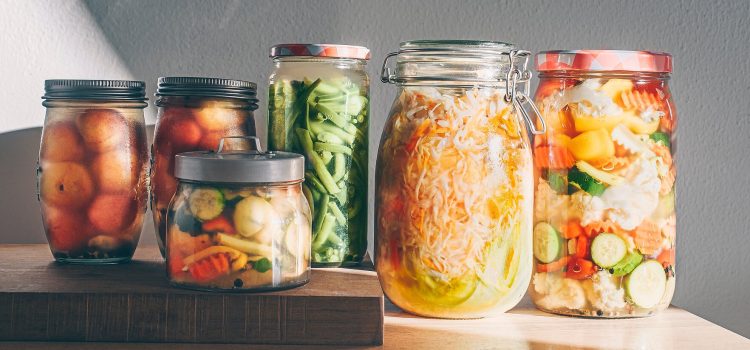
Introduction
A fermented food trend is taking the culinary world by storm. From bubbly kombucha to tangy kimchi, people everywhere are rediscovering age-old techniques that turn simple ingredients into flavor powerhouses. But this craze goes beyond taste. Health benefits fermentation offers—like better digestion and stronger immunity—have driven home cooks and top chefs alike to embrace these living foods. In this article, we’ll dive into the global culinary innovation of fermentation. You’ll learn what fermentation is, why it matters today, and how you can join the frenzy in your own kitchen.
What Is Fermentation?
Fermentation is a natural process. Tiny organisms—yeast or bacteria—feed on sugars in foods. As they eat, they produce acids, gases, or alcohol. These byproducts change taste, texture, and how long food lasts. For example:
- Yogurt: Bacteria turn milk into a creamy, tangy treat.
- Sourdough Bread: Wild yeast and bacteria help dough rise and add flavor.
- Sauerkraut: Lactic acid bacteria give cabbage its sour bite.
Humans have used fermentation for thousands of years. It began as a way to preserve food before refrigerators existed.
A Brief History of Fermented Foods
Fermentation traces back to ancient times:
- Mesopotamia (5,000 BCE): People brewed early beers from grains.
- China (2,000 BCE): Fermented soy products like miso first appeared.
- Europe (Middle Ages): Fermented vegetables and dairy became diet staples.
- Africa & the Americas: Indigenous cultures made cassava beer and corn-based ferments.
Across history, every culture developed its own fermented specialties. Today, these traditions are mingling in global cuisine.
Why Fermented Foods Are Trending Now
Several factors fuel the modern fermentation craze:
- Gut Health Focus: Studies link a balanced microbiome to overall wellness. Fermented foods pack probiotics that help good gut bacteria thrive.
- Flavor Exploration: Sour, salty, and umami flavors in ferments add depth to dishes. Chefs love experimenting with new taste combinations.
- DIY Culture: People enjoy hands-on projects at home. Fermenting simple foods is a fun, affordable way to cook.
- Sustainability: Fermentation can extend the life of food and reduce waste. That appeals to eco-conscious consumers.
This perfect mix of health, taste, creativity, and green living makes fermentation a lasting movement.
Health Benefits of Fermentation
The health benefits fermentation provides are wide-ranging:
- Improved Digestion: Probiotics help break down food and ease bloating.
- Stronger Immunity: A healthy gut supports the body’s defenses against germs.
- Better Nutrient Absorption: Fermentation can unlock vitamins and minerals in foods.
- Anti-Inflammatory Effects: Some ferments contain compounds that calm inflammation.
While more research is always welcome, many people report feeling fitter and more energized after adding fermented foods to their diets.
Popular Fermented Foods Around the World
Here are some global favorite ferments:
- Kimchi (Korea): Spicy, salted cabbage rich in probiotics.
- Kombucha (China/Russia): Fermented tea with fizzy sweetness.
- Miso (Japan): Soybean paste used for soups and marinades.
- Sauerkraut (Germany): Sour cabbage served with sausages and meats.
- Kefir (Caucasus Mountains): Tangy, drinkable yogurt with lots of cultures.
- Idli/Dosa (India): Fermented rice and lentil batters for savory cakes or crepes.
Sampling these dishes gives you a passport to world flavors and traditions.
How to Add Fermented Foods to Your Diet
You don’t need fancy equipment to enjoy ferments:
- Start Small: Add a spoonful of sauerkraut or kimchi to salads and sandwiches.
- Sip on Kombucha: Replace soda with a cold, fizzy gut booster.
- Make Yogurt at Home: Mix live-culture yogurt into warm milk and let it sit overnight.
- Learn Simple Pickles: Slice cucumbers, cover in saltwater, and let them ferment on the counter.
- Experiment with Sourdough: Save a bit of dough (your “starter”) to bake weekly bread.
These steps help you build confidence with fermentation and enjoy its many flavors.
Tips for Safe Home Fermentation
Safety is key when working with live cultures:
- Clean Everything: Sterilize jars and tools to avoid unwanted germs.
- Use the Right Salt: Pick non-iodized salt to keep bacteria happy.
- Watch the Environment: Keep ferments at room temperature, away from direct sunlight.
- Trust Your Senses: A healthy ferment smells tangy, not rotten. If it looks fuzzy or smells bad, discard it.
- Follow Recipes: Especially when starting out, reliable recipes guide you through safe fermentation times and ratios.
With these precautions, you’ll ferment successfully and deliciously.
The Future of Fermented Food Frenzy
The global culinary innovation sparked by fermentation shows no signs of slowing. Look for these trends:
- Hybrid Ferments: New blends, like kimchi-topped ice cream or miso-marinated fruit.
- Tech-Driven Fermentation: Apps and kits that guide home fermenters through each step.
- Functional Ferments: Drinks and snacks enhanced with added probiotics, prebiotics, or adaptogens.
- Restaurant-Level Ferments at Home: Chefs sharing advanced techniques for artisan ferments you can try yourself.
As research links ferment-rich diets to health benefits, both home cooks and food producers will keep experimenting and innovating.
Conclusion
The fermented food trend has transformed how we think about flavor, health, and sustainability in the kitchen. From ancient origins to today’s DIY culture, fermentation proves its power to delight our taste buds and support our well-being. By exploring health benefits fermentation provides and sampling global culinary innovation, anyone can join this rising food movement. Whether you buy ferments at a store or try your hand at homemade pickles, you’ll add flavor depth and probiotic perks to every meal. Embrace the fermented food frenzy and discover a world of tangy, fizzy, nourishing delights!








